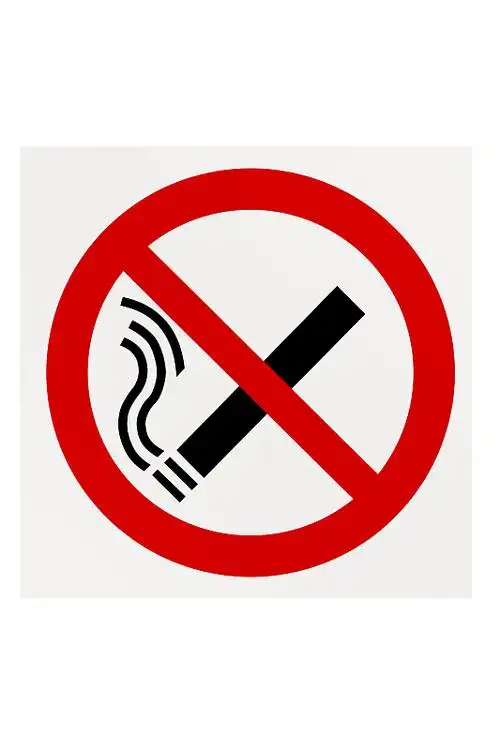The Hidden Agony: How Tobacco Use Worsens Pain and Suffering in Chronic Prostatitis
If you are living with Chronic Prostatitis/Chronic Pelvic Pain Syndrome (CP/CPPS), you know the daily struggle all too well. The persistent pelvic discomfort, the urgent and frequent trips to the bathroom, the mysterious pain that can radiate to your lower back or thighs, and the heavy cloud of anxiety that often follows. It’s a condition that demands a multi-faceted management approach. You’ve likely tried dietary changes, physical therapy, and various medications. But there is one critical, and often overlooked, factor that could be silently sabotaging all your efforts: tobacco use.
The connection between smoking and lung cancer is well-known, but the impact of tobacco on a localized, chronic inflammatory condition like prostatitis is a story that needs to be told more loudly. It’s not just a bad habit; for men with CP/CPPS, it is a direct contributor to a significantly reduced quality of life. This article delves deep into the biological mechanisms behind this link and provides a compelling case for why addressing tobacco use could be your most powerful step toward reclaiming your well-being.
The Inflammatory Firestorm: Tobacco and Your Prostate
At its core, Chronic Prostatitis is a condition characterized by inflammation and nervous system dysregulation. Tobacco smoke, with its cocktail of over 7,000 chemicals, acts like pouring gasoline on this smoldering fire.
-
Systemic Inflammation: Nicotine and other toxins in cigarette smoke are potent pro-inflammatory agents. They trigger the release of a flood of cytokines—chemical messengers that promote inflammation throughout your entire body. For a prostate that is already in a state of chronic irritation, this systemic inflammatory burden is like adding insult to injury. It can intensify the swelling and sensitivity of the prostate gland, directly amplifying the pelvic pain and discomfort that define CP/CPPS. This is a primary reason why smoking worsens prostatitis pain.
-
Oxidative Stress and Cellular Damage: Your body is constantly fighting off damaging molecules called free radicals. Tobacco smoke is a massive source of these molecules, creating a state of "oxidative stress" where your body's natural defenses are overwhelmed. This oxidative damage harms the delicate cells lining the prostate and urinary tract, impairing their function and making them more susceptible to irritation. This cellular assault is a key player in the link between tobacco and chronic prostatitis.
-
Vascular Constriction and Tissue Hypoxia: Nicotine is a powerful vasoconstrictor, meaning it causes your blood vessels to narrow. This reduces blood flow to every organ, including the prostate. A prostate with poor circulation is a prostate deprived of adequate oxygen (a state called hypoxia) and essential nutrients. This impairs the gland’s ability to heal itself and flush out toxins and inflammatory byproducts, effectively trapping the inflammation and prolonging the chronic prostatitis flare-ups. Poor blood flow also contributes to erectile dysfunction, a common and distressing comorbidity for men with CP/CPPS, further eroding quality of life.

Beyond the Prostate: The Systemic Domino Effect
The damage doesn't stop at the prostate's door. Tobacco use sets off a chain reaction of systemic effects that exacerbate nearly every symptom of CP/CPPS.
-
Bladder Irritation and Urinary Symptoms: Many of the toxic chemicals from tobacco are filtered through the kidneys and concentrated in the urine. This creates a constant stream of irritants passing through the bladder and urethra, which are often already hypersensitive in men with CP/CPPS. This directly worsens urinary frequency and urgency in prostatitis patients, making the relentless need to find a bathroom an even more prominent and stressful part of your day.
-
Neurological Sensitization: CP/CPPS is now widely understood to involve central sensitization—a condition where the central nervous system becomes stuck in a state of high reactivity. Nicotine is a neurostimulant that can exacerbate this hyper-alert state. It can lower the pain threshold, meaning sensations that wouldn't normally be painful become intensely so. This impact of smoking on pelvic pain is profound, turning mild discomfort into debilitating agony and contributing to the widespread pain that many patients experience.
-
Weakened Immunity: Chronic smokers have a less robust immune response. This doesn't just mean more colds; it means your body is less equipped to regulate the complex inflammatory processes involved in CP/CPPS. A compromised immune system can allow low-grade infections or inflammations to persist, creating a vicious cycle that is hard to break. This is a crucial part of understanding how quitting smoking helps prostatitis—it allows your immune system to recalibrate and focus on healing rather than fighting off tobacco-induced damage.
-
The Mental Health Toll: The relationship between CP/CPPS, tobacco, and mental health is a vicious triangle. The condition causes stress, anxiety, and depression. Many people (incorrectly) use smoking as a way to cope with this stress. However, nicotine addiction itself creates a cycle of withdrawal and anxiety, while simultaneously worsening the physical symptoms that caused the mental distress in the first place. Breaking free from tobacco is a monumental step in improving quality of life with chronic prostatitis by addressing both the physical and psychological aspects of the condition.
A Path to Hope: How Quitting Tobacco Transforms Your Prognosis
The evidence is clear: continuing to smoke while managing CP/CPPS is an uphill battle. The good news, however, is that the decision to quit can be one of the most effective interventions in your treatment plan. The benefits of quitting begin almost immediately and compound over time.
-
Reduced Inflammation: Within weeks of your last cigarette, the levels of inflammatory markers in your blood begin to drop significantly. This can lead to a noticeable reduction in the baseline level of pelvic pain and tenderness.
-
Improved Blood Flow: Your circulation begins to improve within 2-12 weeks. This enhanced blood flow delivers more oxygen and healing factors to the prostate, supporting tissue repair and helping to normalize function. This can alleviate symptoms and contribute to better sexual health.
-
Decreased Urinary Irritation: As your body clears itself of tobacco toxins, your urine becomes less irritating to your bladder and urethra. You may find a significant improvement in urinary symptoms after quitting smoking, with less urgency and fewer nighttime trips to the bathroom.
-
Lowered Pain Sensitivity: As nicotine leaves your system, your nervous system can begin to calm down. This can lead to a higher pain threshold and a reduction in the widespread, sensitized pain that plagues so many CP/CPPS patients.
Quitting is not easy, but it is a battle worth fighting. It's essential to view it not as giving something up, but as gaining control over your condition. Speak with your healthcare provider about smoking cessation strategies. Options like nicotine replacement therapy (gum, patches), prescription medications, and behavioral counseling can dramatically increase your chances of success.
Managing Chronic Prostatitis is a journey that requires addressing every contributing factor. While there is no single magic bullet, eliminating tobacco use is arguably one of the most impactful actions you can take. It’s a decision that stops the constant influx of inflammation, irritation, and vascular damage that fuels the condition. By choosing to quit, you are not just improving your long-term cardiovascular health; you are taking a direct, powerful stand to reduce your pain, improve your urinary function, and reclaim a sense of normalcy and comfort in your daily life. Your journey to a better quality of life with CP/CPPS starts with a single, powerful breath of fresh air.












